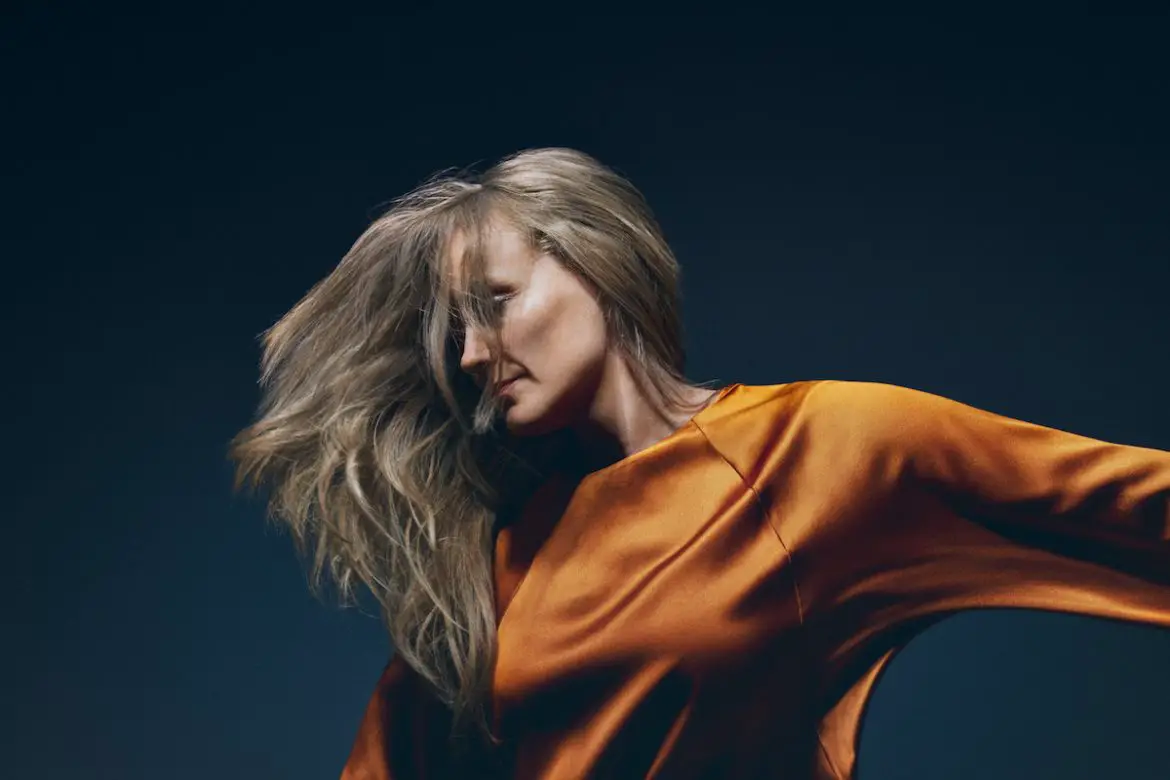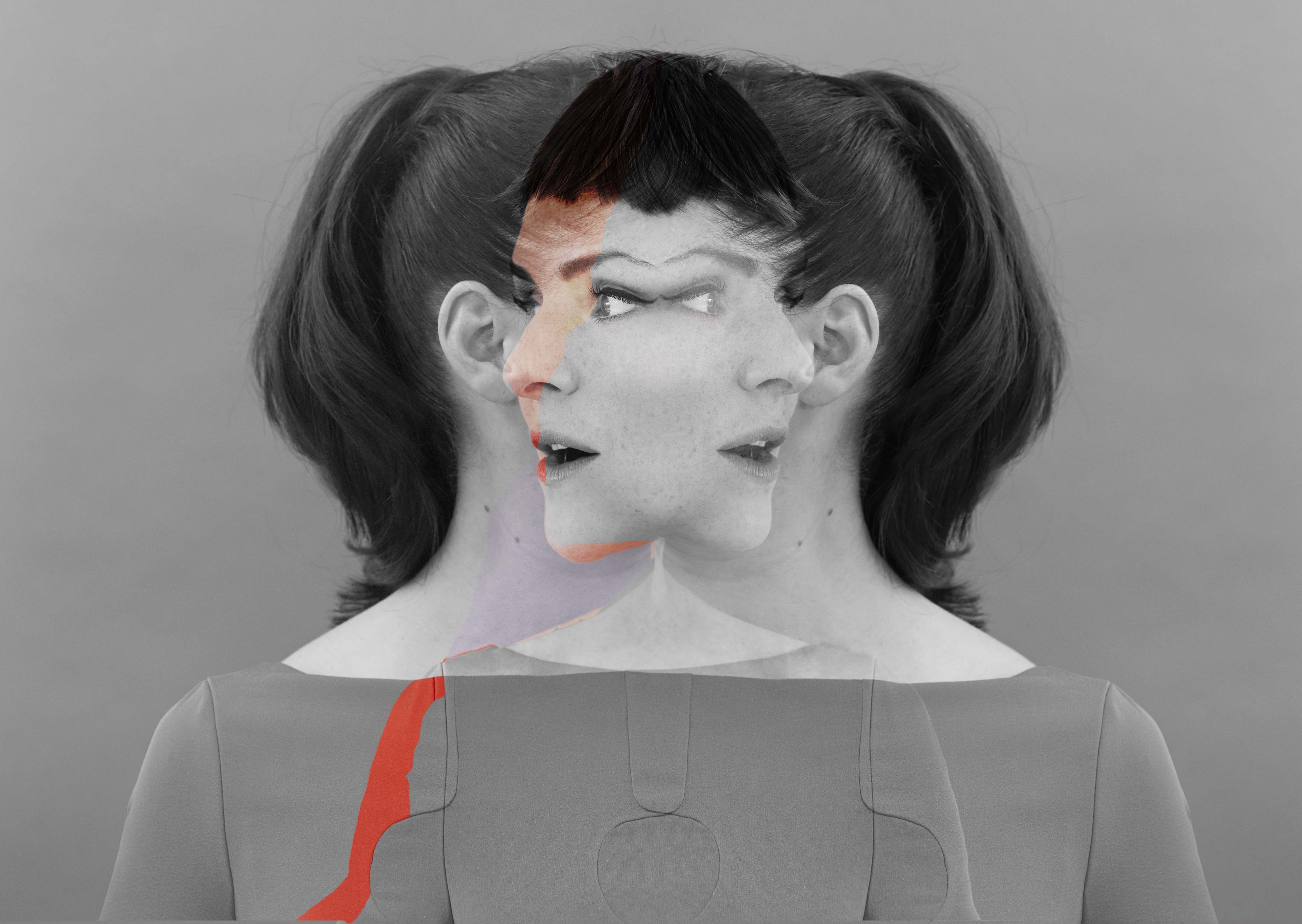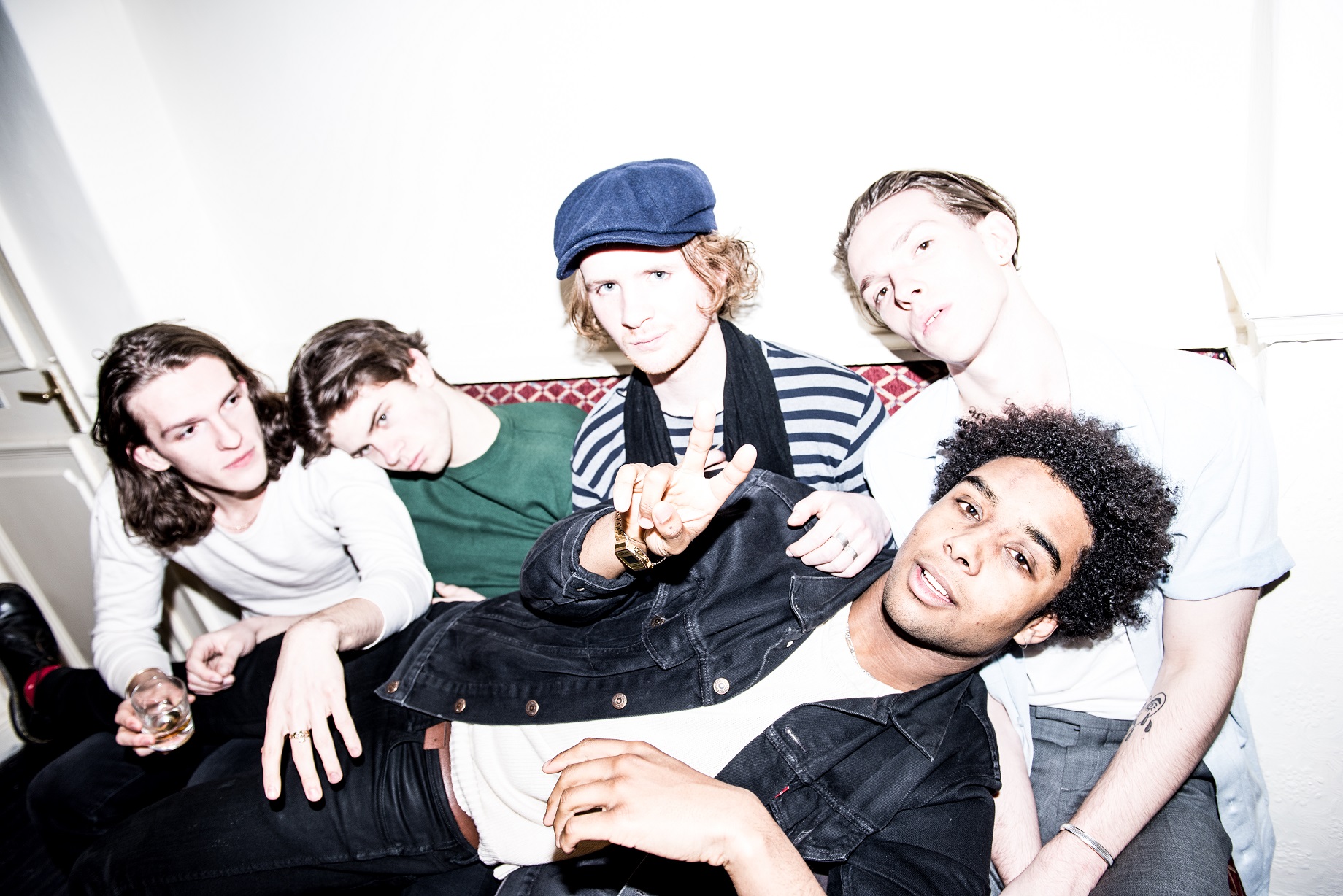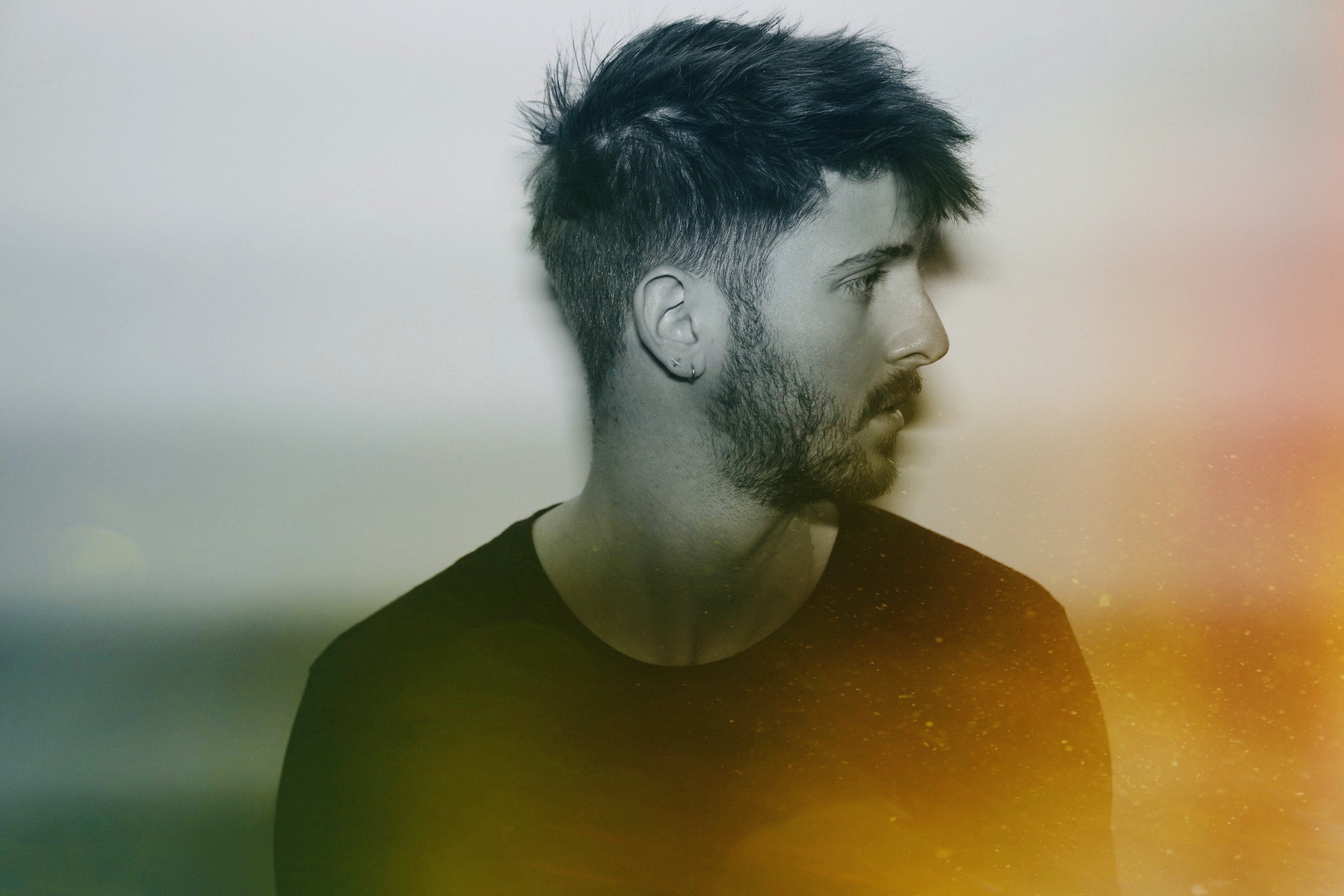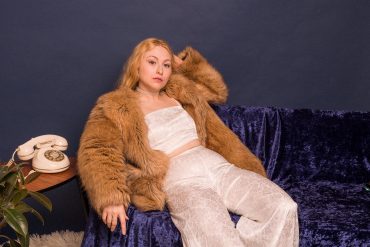When critically acclaimed artist Ane Brun describes her two new albums as “dance-able, cry-able, and feel-able music at the same time,” she’s speaking to an intangible depth that permeates the sounds and sentiments of her art. Brun has found the perfect balance between the cinematic and the intimate on ‘After the Great Storm’ and ‘How Beauty Holds the Hand of Sorrow.’
Stream: “Honey” – Ane Brun
I hope it can give a sense of company in a very disconnected time. Music for me fills a void when I’m alone. It fills the room with a presence that balances my existence.
Ane Brun has found the perfect balance between the cinematic and the intimate, and she is determined to share this newfound musical magic with the world.
When the critically acclaimed Norwegian artist describes her two new albums as “dance-able, cry-able, and feel-able music at the same time,” she’s speaking to an intangible depth that permeates both the sounds and sentiments of her art. Released a month apart, the dressed-up After the Great Storm (October 30) and dressed-down How Beauty Holds the Hand of Sorrow (November 27) offer a spellbinding 90 minutes of connection through sweepingly grand and seductively stripped arrangements that breath life into stillness and emotion into inertia. Representing her thirteenth and fourteenth studio albums over a career spanning two decades, they are not only a dramatic addition to what has been an indescribably turbulent year for all, but also an important addition to Brun’s already enviable massive catalog.
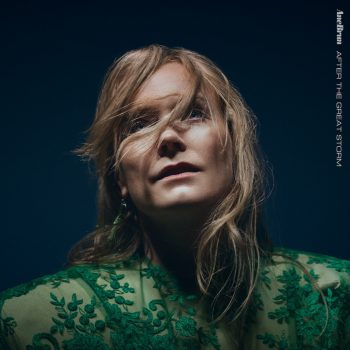
“I feel that I’ve widened my sound and reached both higher and broader in my voice, my poetry, and my composing,” Brun says, reflecting on her artistic growth in the time since her last studio album of originals, 2015’s When I’m Free (she released a collection of covers, entitled Leave Me Breathless, in 2017).
“I had great co-writing sessions with my co-producer Martin Hederos and Dustin O’Hallorna on a few of these songs, which was a new experience for me – which makes me want to try that again in the future. I consciously tried to write harmonically more open songs this time around, i.e. not clear harmonic changes in verse, chorus, bridge etc… Like ”Don’t Run and Hide” and ”Trust,” where the melody changes a lot on top of a static harmonic pattern. I love writing songs in that way, and many of my favorite cover recordings are built like that, like the monteverdi ”lamento della ninfa” (my version called ‘Amor, Oh Love’) and ”Halo” (Beyonce).”
Brun’s separation of her songs into two distinct albums, as opposed to one 18-track double album, was a conscious decision on her part.
“I don’t think many have the attention span to take in such amounts of information these days,” she explains, “and the two albums are quite different from each other when it comes to atmosphere and sound. The first album release, After the Great Storm, is the kind of album I was planning to make. I saw it as ”standing on the shoulders of When I’m Free (2015) and looking over and beyond Leave Me Breathless (2017), and picking up the drama of the big strings of Live at Berwaldhallen. My ambition was a large production, elaborate arrangements, beats and bass line… A lot of inspiration from the ‘90s trip-hop and electronica scene like Massive Attack, Tricky, Portishead. But also with inspiration from the present like Solange, SiR, James Blake…”
In contrast, “A few of the songs on How Beauty… were also first recorded with that in mind, but we rearranged them, because they didn’t find their best potential in a bigger production. They found it in intimate versions. That’s how the second album was created: Through making the decisions that many of the songs did benefit by ”dressing down,” sound-wise. You can have a big vision of a production, but in the end it’s always the song’s core character that decides how it should end up presenting itself.”
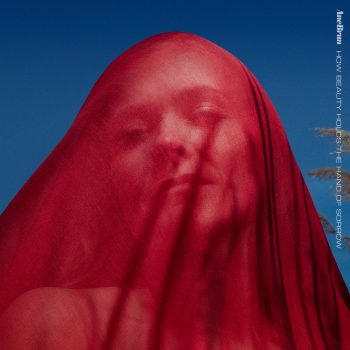
Interestingly enough, while they ended up in separate homes, many of these new tracks were recorded together at the same time. “Most foundations of the songs were first recorded live with a band in the same two week studio session in the Fall of 2019. And some of them were rearranged later, with a more intimate sound for How Beauty. I did a few home recordings in Oslo during lockdown – piano, acoustic guitar, lead vocals, and backing vocal, and worked remotely with my co-producers and mixers from there, and we finished the album remotely. I also wrote and recorded one new song in this period called ”breaking the surface”. The actual studio recordings last year were mostly an amazing experience. Nothing beats a live studio recording with musicians where you just know, after 2-3 takes, that the songs are already almost complete there and then. It happened on quite a few of these songs. ”Honey” and ”Fingerprints” are examples of that.”
Predating the pandemic entirely, After the Great Storm and How Beauty Holds the Hand of Sorrow nevertheless seem to have a hint of premonition – or perhaps we’ve just always felt a lurking isolation haunting us at the fringes of this Digital Age. Brun’s music, built off of self-reflection and introspection, offer vulnerable explorations of the individual, loss, and interpersonal relationships.
“Both albums are written during the same period of my life,” Brun shares. “They are part of the same song cycle, so to speak. They deal with all the bigger issues of life. It’s also a bit strange because all the songs except one, “breaking the surface”, was written prior to the pandemic. But they’re written out of a period of grief and loss and trying to work out life in a new situation. and in that sense it correlates with this year in many ways. It’s about being here and now, focusing on being grateful for what’s now, and not for tomorrow, and being kind to yourself in a difficult time. So many of the songs are kind of me being my own “Buddha”, telling myself how to get on with my life under new circumstances.”
“Somehow I feel that How Beauty is the more empathetic and comforting of the two albums. And I think the fact that these songs ”wanted” to be recorded as intimate songs, is connected with that.”
They’re meant to be soft whispers in your ear or a stroke of hand on your cheek when you need it.

While each record has its share of highlights – “Don’t Run and Hide” and “We Need a Mother” on After the Great Storm are particularly emphatic, as are “Trust,” “Lose My Way,” “Last Breath,” and “Song for Thrill and Tom” on How Beauty Holds… – both records are best listened to as a whole, so as to feel the fullness of their crescendos and the agonizing weight of their silences.
“There were many great moments in the process, and important decisions were made about certain songs,” Brun says with regard to her own musical and personal takeaways to these albums. “Producing one of my favourites ”Take Hold of Me” was one of these moments. It was first recorded with live musicians.. but when we were done, I kept the vocals, the kick drum and the synth bass line and muted everything else, and decided I wanted it to be produced as a dance tune, inspired by Swedish act The Knife and their classic tune Silent Shout. The song is about an oppressed feeling of existential emotions, questions about “am I living the life I want to live? in the right place? with the right people?” the music is meant to illustrate it with its restless beat and build up of drama..And I love to listen to the song today and feel that my vision was fulfilled.”
“I’ve released all my music through my own label Balloon Ranger Recordings since 2003,” Brun adds, “and with being indie comes a lot of freedom in how to do things. This year we experimented with the release strategy of the two albums. I doubt I would be able to do what we’ve done on a bigger label, since it would be hard to fit their schedule. Because we decided to release a big amount of singles. 12 out of 18 tracks were released separately pre-album release. Which was an amazing way of sharing my music, with a lot of focus on each track.. And then the two albums released only four weeks a part. And it has been such a positive experience! When the pandemic started we decided to work a lot online, and find ways to reach my fans (and new fans) through creating content such as videos and infomercials about the songs, and even through live listening/meet and greet sessions online.”
Each of these records is its own ethereal, cathartic soundtrack to inner reckoning and self-discovery.
Brun’s visceral songwriting and her enchanting delivery make for a compelling listen through and through. Hers is an unveiling and a purge, and upheaval and a reckoning – yet what individual audience members take away is ultimately up to them. “As always, I hope that my music connects with something in the listeners and sets in motion something that can help them connect with themselves,” Brun tells Atwood Magazine. “Maybe remind them of something of give some kind of insight about their own lives. Because that’s what music and art is for, right? And I hope it can give a sense of company in a very disconnected time. Music for me fills a void when I’m alone. It fills the room with a presence that balances my existence.”
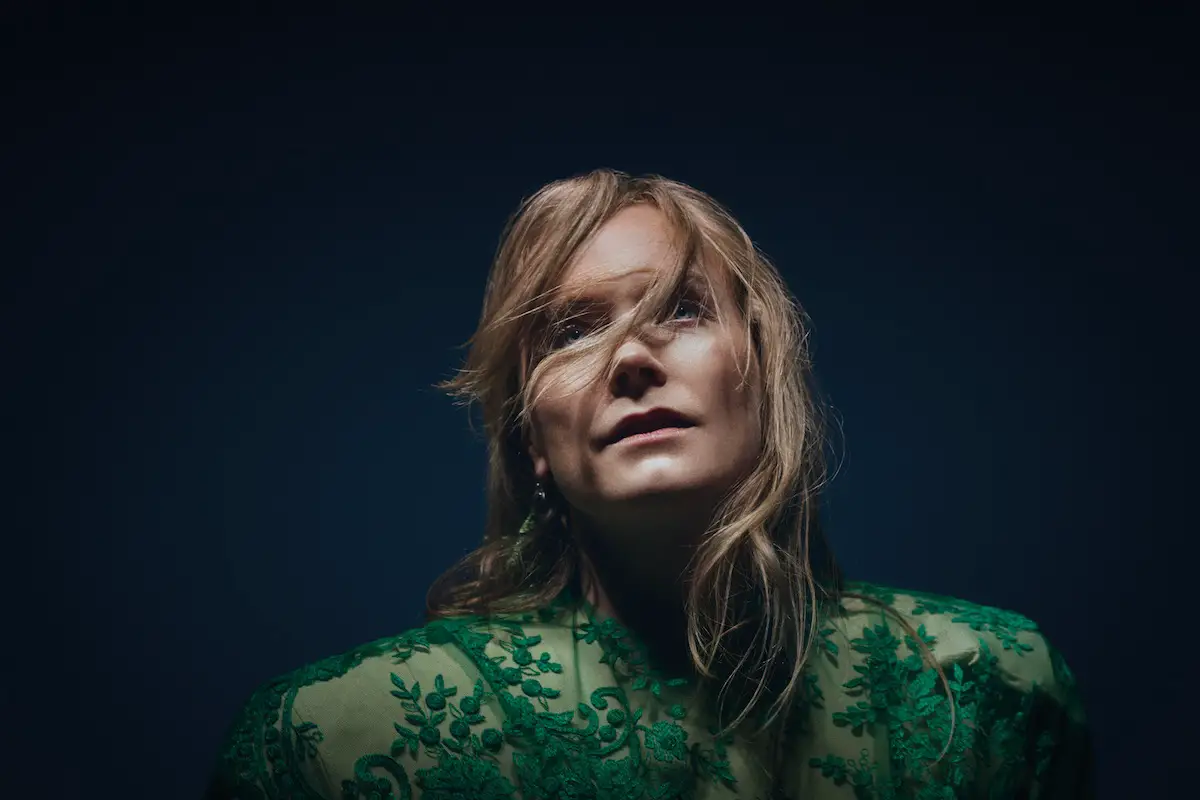
These two albums have, without a doubt, filled the void with something very special indeed. Experience the full records via our below streams, and peek inside Ane Brun’s After the Great Storm and Beauty Holds The Hand of Sorrow with Atwood Magazine as the artist goes track-by-track through the music and lyrics of her two new albums.
Ane Brun’s After the Great Storm and Beauty Holds The Hand of Sorrow are out now via her own Balloon Ranger Records.
— —
:: stream/purchase How Beauty Holds… here ::
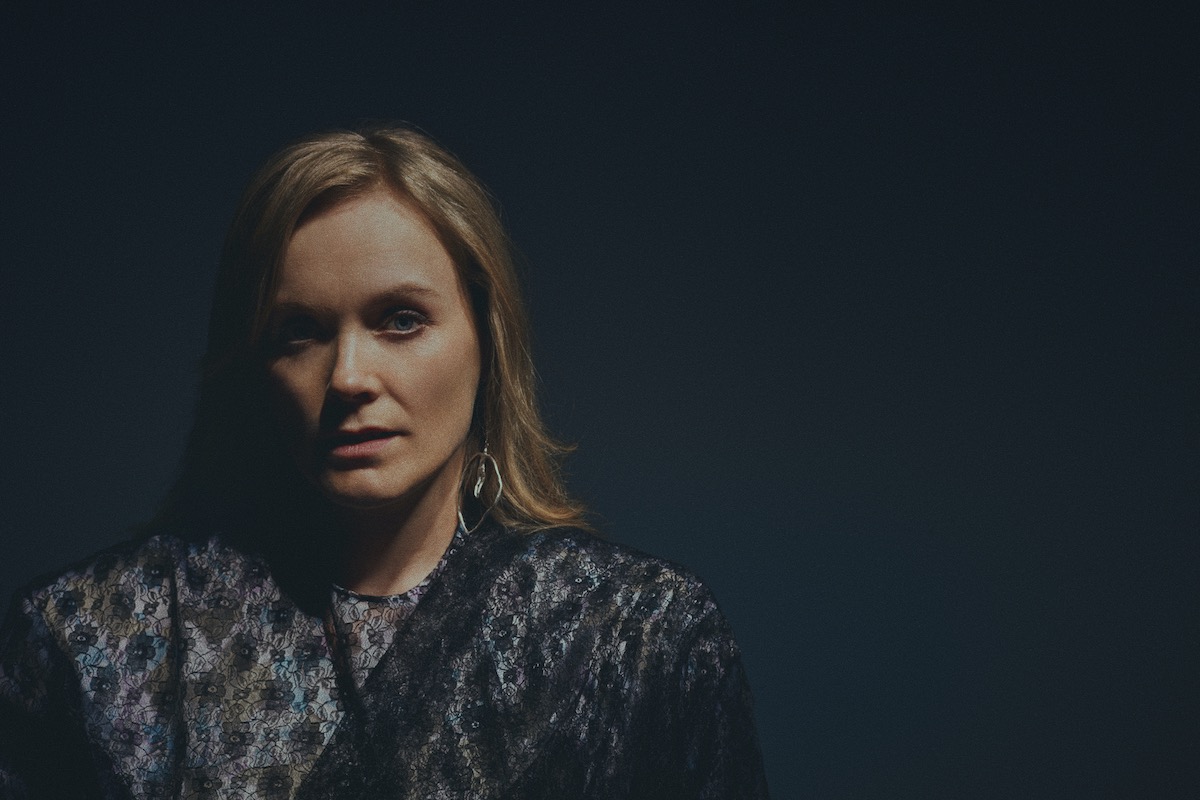
:: Inside After the Great Storm ::
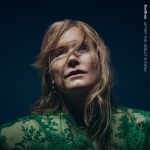
— —
Honey
”I had a penpal for many years. We started writing to each other when we were about 13 and kept it going for about a decade. The letters faded away as the age of emails took over, but those handwritten notes from our teens were long, intense and personal. In our thirties we decided to swap our old letters to each other, and soon after a shoebox full of thick envelopes arrived in the mail. Reading through my own words opened up a lot of doors to memories I had long forgotten. In that same box was a cassette tape. Luckily, I had held on to my old Walkman, so I dug it out and excitedly pressed play…
There it was! The light, clear voice of my 18-year-old self. As the tape rolled, my jaw dropped. Her energy struck me and I was filled with love for this young, and in many ways innocent, version of myself – this girl talking non-stop in a boundless flow of words and emotions. I was reminded of how I was back then, of how I dealt with things, and of how I’ve learned to do things differently. But it also reminded me of the lightness and the giggles that were such a big part of that time, and that I for many years had missed out on while mapping out my life as an adult. While listening back, I realised that the woman I am today had reconnected with the girl on the tape, and that simple act had made me feel in some way more whole. I decided to write a love song to my young self that day! This is ”Honey”.
Musically we tried to bring in the 90’s, to the time when I actually wrote those letters, to the time when I was 18. The recording of Honey was mostly live at the Atlantis studio, with some add ons of triangle, synth bass, and backing vocals by Linnea Olsson and some by John Ericsson of Peter, Bjorn and John. Inspired by the hit song ”Fool’s Gold” Other than that it was like a long happy jam, and the second part of the song is a long musical outro for a dance off, just like I used to do when I was at that age!”
After The Great Storm
”I love how this track became a monster of energy with my voice floating on top. I love how the giant string arrangement makes the track feel like a soundtrack to a Game of Thrones-battle.
”This song describes the feeling that can come after a great ordeal, when everything is over and you almost reach a state of euphoria and lightness. It’s like what people describe when they’ve had a near death experience, or an epiphany: the feeling of being part of a bigger universe.”
Bonus fact: The unique vocal performance in the outro is by Ellekari – who’s also the featuring backing vocalist of my 2011 song ”Undertow”
Don’t Run and Hide:
“I think that this song perhaps have a little of the emotional colour of perhaps ”These Days” (2011) but when I started writing the music for my new album I wanted it to ”stand on the shoulders” of “When I’m Free” (2015) and kind of look across over “Leave Me Breathless” (2017) and beyond. I wanted to keep pushing myself forward, and make interesting pop music, both to myself and to my listeners. I also wanted to continue the line of energetic live performances that I’ve developed through the years, and therefore write and produce music that invites those kinds of live shows.”
“Don’t Run and Hide” was the first song I specifically wrote planning for a new album. I wrote it based on three elements. Beats, that endless repeating baseline and the melody on top. I’ve realised that many of the songs I like are based on a single baseline that repeats itself. For example the old baroque arias that I’ve covered, by Purcell (Dido’s Lament, Laid in Earth) and by Monteverdi (”Oh Love, Lamento della Ninfa) but also the world hit ”Halo”. I love the challenge of creating a melody that transforms and moves and stays interesting across the same bass-line throughout a song. It’s like a running train or moving across an open sea, It brings a sense of boundlessness which I find liberating. And the dynamics can build up and down from adding energy in the vocal performance, the other ingredients like the strings, the backing vocals, the percussion..
“I revisited a lot of the trip hop that I enjoyed in the 90s that still feels fresh and timeless to me, as I also did when I made “When I’m Free”. Like then I listened to songs from different artists like Massive Attack, Unkle, DJ Shadow, DJ Cam and many more. But for this album I’ve mostly listened a lot to contemporary music to get inspired for the production. Examples: SiR, Kendrick Lamar, Anderson Paak, James Blake, Solange, Blood Orange. Our (the production team) key vision was to make music with beats mixed with a lot of heart and warmth. Emotional music that also makes you want to move. “
“My father passed away almost four years ago, and after that I went through a long period where I had trouble sleeping. I often woke up multiple times per night, which led to a lot of overthinking. And when I overthink, I usually write down my thoughts in notebooks which I sarcastically call the ”garbage cans”, which means it’s not intended for the afterworld. It’s just meant to ”empty” my head of a surplus of thoughts. I always destroy those notebooks, but not without looking through them since I’ve found some golden lines there through the years that has become seeds for lyrics. “Don’t Run and Hide” is build upon one of those golden seeds from the garbage can.”
“Since a few years back I’ve been more conscious about what my music can mean to people. Also because music has a very central role in my own life, it’s a constant companion in all corners of my life. Nevertheless, I rarely have that in mind when I start writing a song. The initial inspiration comes from something I want to express, something I want to understand or decipher, something that’s been bothering me, or has made me feel excited.. But as I finish the song I do turn the attention to the listener, and think about what it might mean or how the song communicates. It’s ok that it’s a mysterious message, but I’m very careful about my choice of words so that there are not any misunderstandings when it comes to semantics. It’s ok if someone interprets my lyrics differently because of their own perception of life, but not because of a language error on my account.”
Crumbs
I think many people can recognise a situation like this. It’s more common than you’d might like to think, that people get involved with someone who’s already in a relationship. And how you end up eating the crumbs of a potential relationship, leaving you emotionally starving. When I wrote this song I kept thinking about Nina Simone’s amazing rendition of ”The other woman” by Jessie Mae Robinson.
Feeling Like I Wanna Cry
”I once had a dream where someone had come up with a solution to the climate emergency. The new discovery was that we could stop the Earth from rotating for one whole minute and then restart it again. It would be like a reboot of the whole system, and we would get a second chance of making everything alright again. Let’s hope that this involuntary shutdown has an impact on our future choices.”
Take Hold of Me
My lyrics starts out with these few lines: “My existence is screaming, it’s a physical feeling, of missing out on dance and light”. I try to describe an existential complex state of mind. An abstract feeling, and something that I’ve felt come and go through the years. And in some ways, in this time of the pandemic, it’s being emphasized even more. A feeling that things are on hold, that life is not lived to its full potential, and that the bigger questions are so present right there on the surface. It is something that at least I have experienced in this very different situation we’re in right now in 2020.
The Waiting
A state of not being in a relationship, when you want to be, can be a frustrating feeling. I’ve spend a lot of time on longing for romance during my single years. I wish I had put more focus on enjoying life as it was. And romantic relationships are not worth having if they don’t add something good to your life. Then it’s better to be on your own, I think. Love should come in and fill the grey corners of your existence.
We Need a Mother
‘We Need A Mother’ has its origin in thoughts about a lot of different aspects of society. But it was originally inspired by a corporate business conference I attended, where, in the opening speech, the importance of climate action was discussed. But then the night ended with enormous fireworks, costing millions, exploding over the water. It reminded me of how we as individuals, businesses and societies so often practice double standards when it comes to our values and priorities, myself included; how hard it is to live a wholesome, sustainable life; and how we as grown-up humans can act like adolescents, and it seems like we need mature leaders to keep us on the right track. I remember feeling so frustrated and upset, and when I woke up the next day I wrote this song. After I had finished, I felt relieved and calm.”
:: Inside How Beauty Holds the Hand of Sorrow ::
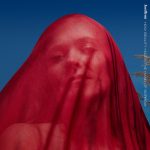
— —
Last Breath
This is the song where I’ve found the album title. This is a song about the last goodbye. The last moments of someone’s life. The amazing string arrangement that takes over in the end is by Johan Lindström. I always feel it takes us into eternity.
Closer
This is a song about the never-ending topic of how hardship makes you stronger, or brings you closer to something truer to yourself. My experience is that the expression ”if it doesn’t kill you it makes you stronger” is quite realistic, but I’m certain that there are exceptions to that rule.
Song for Thrill and Tom
Song for Thrill and Tom” is about a complex, beautiful and extraordinary love story. The main characters are real people in my life, who I’ve tried to portray as authentic as possible, so that it becomes like a musical monument of the existence of their love. Like a ring on their fingers. ”Thrill and Tom”, are my dear friend Tirilleia and her Tom, the great love of her life, who tragically passed away two years ago.
Meet You At the Delta
This song was originally a melody I’d written to a poem by Swedish poet Bruno K Öjer for the Swedish Literature show Babel. I have written a new English lyric to this, unrelated to the Swedish poem.
I think one of the things I’ve learned growing older is that how ever much I’d like to help another person with their life, with their process, with moving on from their positions and patterns, it’s always the person in question that has to make that soul journey themselves. We can stand next to them, wait and be there, but the actual process has to be finished independently. It’s frustrating sometimes, as I have a very ”doer” personality, to stand on the sidelines and see that people I love are stuck in their destructive ways.
Trust
It’s a song about letting go of all doubt and just letting yourself fall into the hands of fate, and trust that it’s all going to be alright. It was first written as a romantic song, but as we’re in this state of uncertainty around the planet I feel it has gained more meaning. I try every day to step into a mental state of trust. Even though it’s challenging to connect with every day, especially in 2020, I know that it’s healthy for both my body and my soul, so I try.
Gentle Wind of Gratitude
I’ve often experienced that if I’m in a state of worry or sadness, and switch my thoughts into a state of gratitude, I can almost feel a difference immediately in my well-being. It seems like a natural human state of mind somehow. Everything feels lighter and more open when I manage to connect with gratitude. American singer-songwriter Gabriel Kelley is featured on backing vocals on this tune.
Breaking the Surface
This is the only album track penned after the pandemic began. I had an image in my head during the first couple of months of a lake where truths floated up and broke the surface, and made circles on the water. One of those truths was how love and our close relationships are, in the end, all that count. A crisis like this shows us how the world is structured, both politically and economically, and what really matters. I’m not really sure if we’ll get there, but I hope that this pandemic that has happened to us, also becomes something positive in the end. Some days I’m really worried it won’t, but for me personally, it has given me a unique opportunity to stop and reflect.
Lose My Way
This is a song written and performed by myself and Dustin O’Halloran, an American Oscar-nominated, Emmy Award-winning composer (also member of A winged victory for the sullen) Dustin and I decided to try to co-write in Dustin’s studio on a very warm Berlin night back in 2016. We had just become friends, and I had been a long time fan of Dustin’s music. When we met, it was only a few weeks since my father had passed away, so I was in a very special, vulnerable state of mind. We had a glass of wine and improvised our way to this song, which was finished the same night, with words coming out of me like a message to my father. The next day we recorded the version that’s on the album. We have both loved this song from the day we created it, and are so grateful to finally release it.
Don’t Run and Hide (piano version)
As the pandemic started, and I was stuck at my boyfriend’s place in Oslo. I tried to be as productive as possible, and I also reconnected a lot with the songs on the albums. I’d been very busy with logistics and recordings during the Winter, and had lost a bit of the soulful connection I felt when writing the songs. So I sat down by the piano, only a week into the semi lock-down in Oslo, and I tried to express the words in ”Don’t Run and Hide” as intimate and vulnerable as I myself was feeling in the situation. I posted it on social media, and seemed to give some kind of comfort. At least, it clearly resonated with many, with thousands of views and hundreds of comments. I decided to add this version to the album since it brings out a tenderness in the lyrics that perhaps is more hidden in the original version on After the great storm.
— —
:: stream/purchase xxxx here ::
— — — —

Connect to Ane Brun on
Facebook, Twitter, Instagram
Discover new music on Atwood Magazine
? © 2020
:: Stream Ane Brun ::

